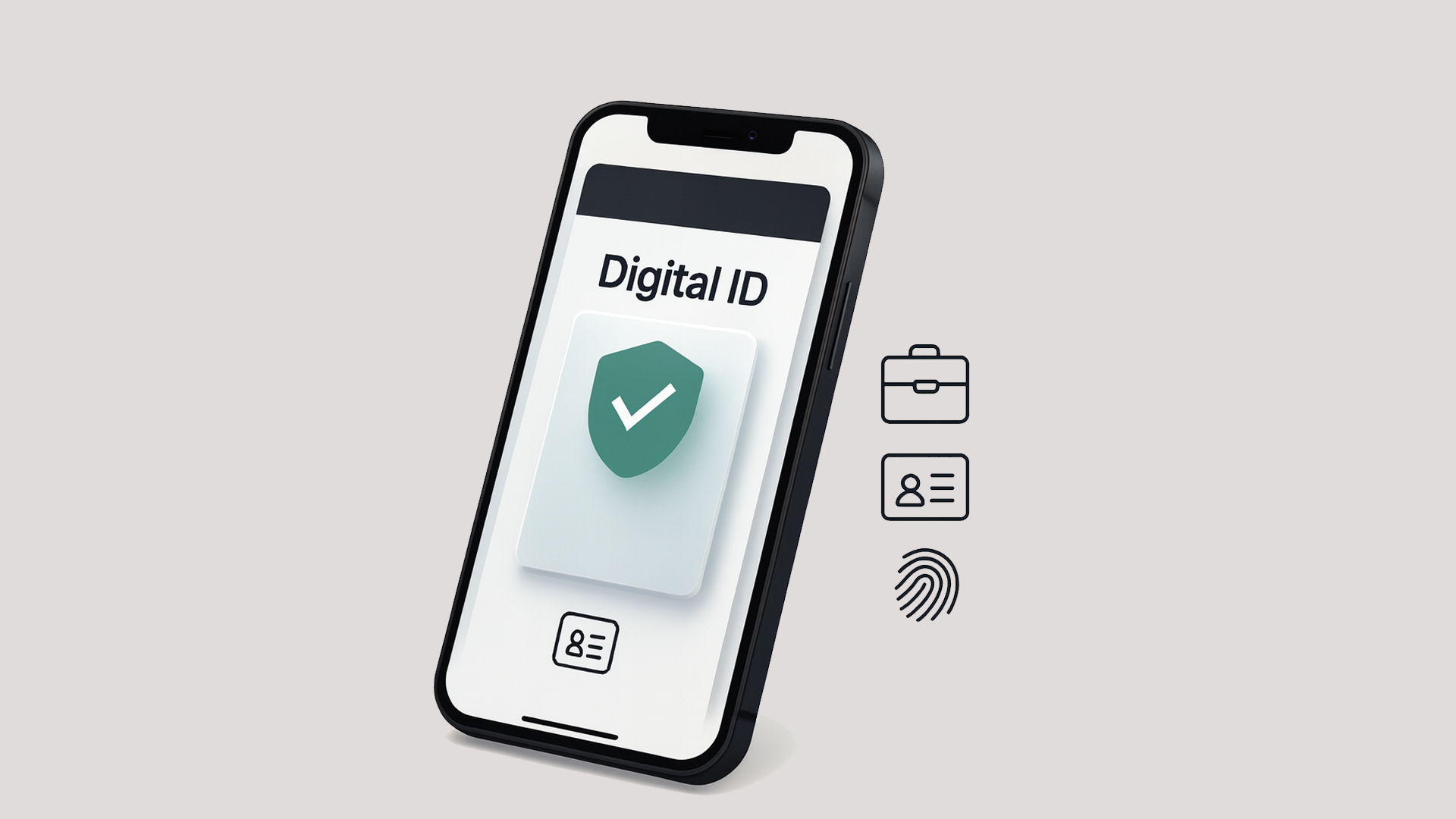- What the digital ID will do
- Benefits and compliance impact
- International examples and best practice
- Inclusion and data protection
- Preparing for change
- Supporting your business through transition
As part of the UK’s digital transformation agenda, the government has announced plans to introduce a nationwide digital identity system that will change how people prove their right to work and access public services. The initiative — which will become mandatory for Right to Work checks before the end of the current Parliament — represents one of the most significant compliance shifts in recent years.
For employers, recruitment agencies, and professionals relocating to the UK, the system promises greater efficiency and security but also brings new operational challenges.
What the digital ID will do
The digital ID will be available to all UK citizens and lawful residents. It will confirm a person’s identity and residency status through a secure digital credential stored on their smartphone, replacing the need for paper-based checks such as passports or utility bills.
The system will gradually expand to cover wider services — including driving licences, tax records, childcare and welfare benefits — making identity verification simpler and faster. For employers, the key change is that digital ID will become mandatory for Right to Work checks, automating verification and reducing document fraud.
Prime Minister Keir Starmer called the initiative “an enormous opportunity for the UK,” saying it will strengthen border security and make it easier for citizens to access essential services. The plan forms part of the government’s broader Plan for Change, which includes stricter measures against illegal working and greater oversight in the gig economy.
Benefits and compliance impact
The new system aims to save time and improve accuracy in employment verification. Automated checks will streamline onboarding while providing employers with audit trails to demonstrate compliance. For employees and contractors, it simplifies how they prove eligibility to work, removing repetitive document submissions.
By linking identity data with immigration records, the government intends to reduce illegal working and curb one of the major pull factors for irregular migration. At the same time, the scheme offers legitimate users faster, more reliable access to public services.
International examples and best practice
The UK’s model draws on successful systems abroad. Estonia’s digital ID allows seamless access to education, healthcare and benefits. Denmark uses its national ID for university and job applications, while Australia and India have reported major gains in efficiency and fraud prevention through their own programmes.
These precedents show that digital identification can enhance both security and convenience — provided privacy and accessibility are carefully managed.
Inclusion and data protection
The digital ID will use state-of-the-art encryption and biometric verification, similar to the NHS App or secure mobile payments. Credentials will be stored directly on each user’s device rather than in a centralised database, reducing the risk of large-scale breaches. If a phone is lost or stolen, credentials can be revoked and reissued immediately.
To ensure no one is excluded, a public consultation later in 2025 will explore how people without smartphones can use the system. Outreach and in-person assistance will be available for those less familiar with digital tools.
The government has also pledged to limit data sharing: employers will receive only confirmation of Right to Work, not a person’s full data profile, helping preserve privacy.
Preparing for change
Although the new framework has yet to take effect, businesses should start preparing now. Key steps include:
- Reviewing internal Right to Work and onboarding policies.
- Ensuring HR and payroll systems can integrate with digital verification.
- Training staff on future compliance requirements.
- Monitoring Home Office updates and the outcomes of the public consultation.
Proactive preparation will reduce disruption when the digital ID becomes mandatory and demonstrate good-faith compliance to regulators.
Supporting your business through transition
For employers, agencies and internationally mobile professionals, the UK’s digital ID scheme marks a pivotal moment in modernising workforce compliance. At Access Financial, we help businesses and contractors navigate evolving regulations, manage payroll and immigration obligations, and adapt their systems to new digital standards.
Our experts are monitoring developments closely and advising clients on readiness strategies — from policy reviews to digital process alignment — ensuring compliance remains seamless throughout the transition.
The move towards a digital identity system offers a chance not only to meet new requirements but to build more secure, efficient and future-ready employment operations across the UK labour market.

